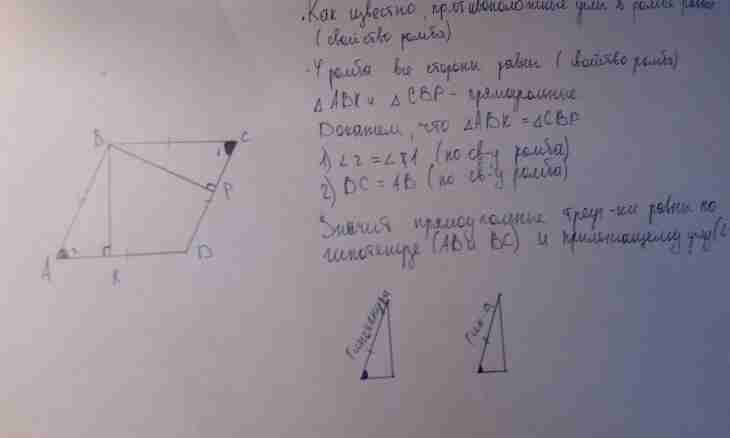Before looking for the solution of an objective, it is necessary to choose the most suitable method of its decision. The geometrical method demands tdopolnitelny constructions and their justification therefore in this case use of a vector technique is represented to the most convenient. The directed pieces - vectors are for this purpose used.
It is required to you
- - paper;
- - handle;
- - ruler.
Instruction
1. Let the parallelogram be set by vectors of two of its parties (other two are in pairs equal) according to fig. 1. Generally as is wished there is a lot of equal vectors on the plane. For this purpose equality of their lengths (more precisely than modules – |a|) and the directions which is set by an inclination to any axis (in the Cartesian coordinates it is axis 0X) is required. Therefore for convenience in tasks of this kind the vectors, as a rule, set their radius vectors of r= and at which the beginning always lies at the beginning of coordinates.
2. For finding of a corner between the parties of a parallelogram it is required to calculate the geometrical sum and the difference of vectors and also their scalar product (a, b). By the rule of a parallelogram the geometrical sum of vectors of an and b is equal to some vector with = and +b which is constructed and lies on AD parallelogram diagonal. The difference of an and b – d=b-a vector constructed on the second diagonal of BD. If vectors are set by coordinates, and the corner between them makes f, then their scalar product is the number equal to the work of modules of vectors and cosf (see ris1): (a, b) = |b| cos f
3. In the Cartesian coordinates if and = {x1, y1 } and b= {x2, y2 }, then (a, b) = x1y2 +x2y1. At the same time scalar square of a vector (and, a)= |a| ^2=x1^2 +x2^2. For b vector – similarly. Then: |b| cos f = x1y2 +x2y1. Therefore cosf = (x1y2 +x2y1) / |b|). Thus the algorithm of the solution of a task is as follows: 1. Finding of coordinates of vectors of diagonals of a parallelogram as vectors of the sum and difference of vectors of its parties with = and +b and d=b-a. At the same time the corresponding coordinates of an and b develop just or subtracted. c = a + b = {x3, y3 } = {x1+x2, y1+y2 }, d = b-a = {x4, y4 } = {x2 – x1, y2-y1 }. 2. Finding of a cosine of the angle between vectors of diagonals (we will call it fd) by the provided general rule cosfd = (x3y3 +x4y4) / (|c| |d|)
4. Example. To find a corner between diagonals of the parallelogram set by vectors of the parties of a= {1, 1} and b = {1, 4}. Decision. According to the given algorithm you need to find vectors of diagonals of c= {1+1, 1+4} = {2, 5} and d= {1-1, 4-1} = {0, 3}. Now calculate cosfd = (0+15)/(sqrt(4+25)sqrt9) = 15/3sqrt29=0.92. Answer: fd = arcos (0.92).

